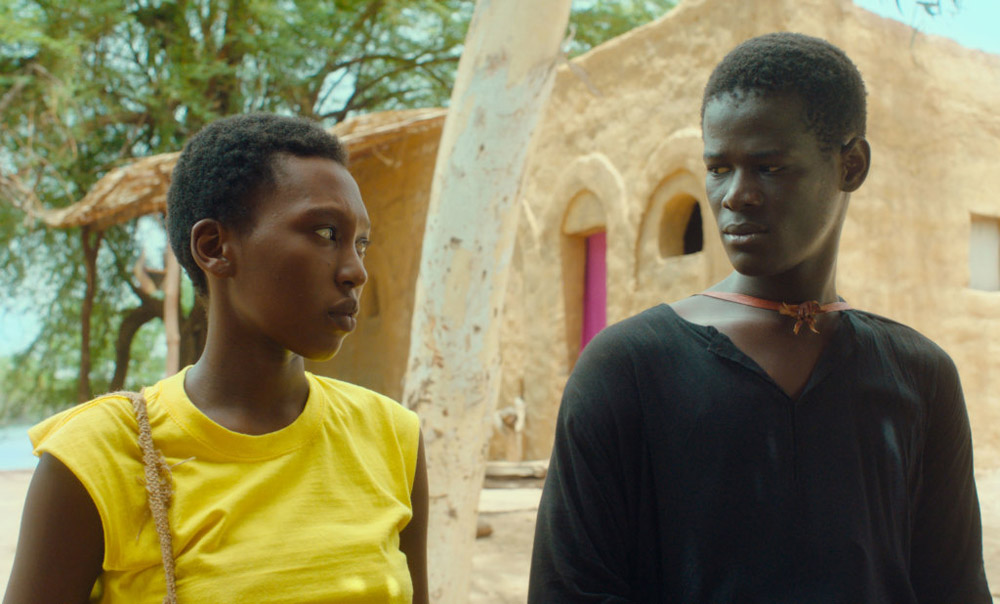It would be a tragedy under any circumstances to see Banel (Khady Mane) attempt to build a home of her own away from the village where she grew up in the Senegal-set “Banel & Adama,” but it takes the unusually sturdy foundation that writer/director Ramata-Toulaye Sy lays down to observe its full effects. Picturing a young woman who is already widowed in her twenties, yet has found true love with his brother Adama (Mamadou Diallo) — and even more remarkably he is willing to leave the only life he’s ever known to be with her, the film starts out as an uncomplicated romance yet almost immediately grows more complex when Adama resists taking the place of his brother in the village hierarchy, having the bloodline to be a leader, but not the passion for it. Still, the village may need him as cows and crops are dying during a particularly brutal dry season and while he is committed to seeing through the home he hopes to develop with Banel, the responsibility of ensuring his community’s survival may be too great to abandon.
As great as the drama may be around Banel’s decision, it pales in comparison to what Sy envisions being stirred up inside of Banel as someone who felt lonely enough in the small village as it is before being threatened with losing her connection with Adama and wonders whether she can find it within herself to truly go it alone. While the filmmaker arms her with a slingshot to kill bugs and vent out her frustrations at times, she appears strongerl than she knows and although she doesn’t appear to have any control over the world around her, “Banel & Adama” suggests Banel is a force of nature who upon harnessing her own power could be all but unstoppable.
That’s the feeling you also get from the command shown by Sy in her extraordinary debut feature, acknowledged in its singularity by a rare spot in the competition at Cannes last year when it takes most established filmmakers many movies into their careers to crack the lineup. Although “Banel & Adama” is almost bracingly direct as a story, Sy creates a sensual experience where its full impact only gradually sneaks up on you, from the casual beauty with which the filmmaker presents rural life in Senegal pulsing with color to sounds of the environment that may be stifling to Adama, but place her in the context of a far larger world for an audience. Now taking the world by storm as “Banel & Adama” is beginning its international theatrical run and the filmmaker is in between stops in New York and Sao Paulo where she’s about to start writing her next film, Sy graciously took the time to talk about how she gravitated towards filmmaking amidst her various artistic passions, how the film took shape once she found the right location for it and how Banel became a central focus.
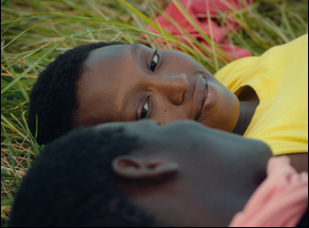
It’s been a surprise for me too because I always loved literature since I was young. My mom just put my sibling and I at the library every Wednesday afternoon and Saturday all day, so I grew up with books. But [ultimately] I just wanted to tell stories. That was my main goal because telling stories feels good to me, and I wanted to share my story. [I was inspired by] other people like J.K. Rowling, who I know is a bit of weird right now, but “Harry Potter” is really special for me and also Toni Morrison, Maya Angelou, Jesmyn Ward and [William] Faulkner also. I really love Afro-American and American literature. and I try to mix my passion between cinema, literature, and art, and poetry too, [which is what led to] the voiceover in [“Banel and Adama”].
You’ve also said aesthetically in the film, you wanted to move from impressionism to expressionism. What was that like to put together?
Yeah, I didn’t want to do a naturalistic movie, because it’s an African movie and in Africa, we‘re used to seeing naturalist movie about war or terrorism or oppressed women. I just wanted to propose another view of Africa and of the story and for me, the story and the image are linked. You can work on the image without the story. So I wanted to do a love story and for that, it was very important for me to work on the color. I didn’t want to do a cliched movie with the camera on my shoulder. I really wanted to create a painting – that is my other passion. I really love contemporary art — Kerry James Marshall, Amoako Boafo, Van Gogh, Edvard Munch, and I took inspiration from them. I always go in museums in France, [where] we are really lucky to have a lot of art and culture and when I go to New York, I love to go to MoMA, the Guggenheim, and to the Harlem and Brooklyn Museums. I will say this with humility, but I wanted to create a new vision of African cinema than we‘re used to seeing.
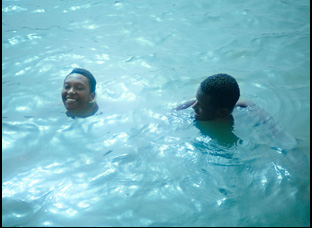
Because in my movie, there are three main characters – Banel, Adama, and nature, and how do you create nature as a character? For me, it wasn’t with the image, but with the sound and at the beginning of the movie, you hear a lot of sound from nature – from animals, from the tree – and the sound of nature dies because of the curse of the love story, and I tried with my sound crew, really to create a real character that we can feel with true emotion.
Was this location somewhere you were already familiar with when you were writing? Particularly that amazing tree with the exposed roots that Banel often leans her head against?
No, we found the place. I was born in France, but my parents are from Senegal and I went to Senegal sometimes on vacation, but not a lot. And this place is about eight hours from Dakar, but it was really important for me to shoot the movie right there, because it’s where the Fulani people live in the north. We went all around the region a few months before the production with my team and I wanted to find a village without electricity, because it was really important for me to recreate the atmosphere of the tale we were telling, and by surprise and magic, I don’t know how we found this beautiful tree, but I rewrote some scenes around it because it has such an amazing presence.
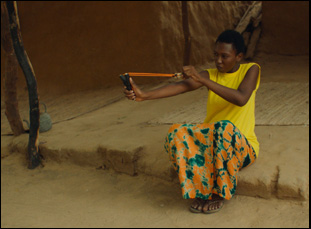
Yeah, because we started the casting five months before the shoot and it was so difficult to find [Banel]. A lot of girls, like thousands, went to the casting. But it’s my first movie and I have a lot to learn yet about how to direct actors, so I just wanted to have a link with a girl because the character of Banel is really important for me. I put a lot of me in Banel. And I was so scared because one month before the shoot, I didn’t have my lead yet. And one night, I was walking on the street, and [Khady Mane] was there and I looked at her, and she looked at me and I saw something in her eyes. I don’t know why, but I felt something. And I asked her to come to the casting and at first, she said no. [laughs] But I explained the character to her, and she came. After that, she was so special for me.
And it’s funny because Mamadou [Diallo], who played Adama, went to the first casting, the second one, and the third one and at the third one, I said, “No, I don’t want him.” And he said, “Okay,” and he went to Dakar for vacation. But after that, I was not sure [I made the right decision, passing on him]. I was looking at the tape that we did of him and I said, “I think I want to see him again,” but then he was in Dakar, so I took the car and we drove eight hours to see him again. And I had to [say] “I’m sorry, but I made a mistake. In fact, it’s you.”
From what I understand, something that was of interest to you was the physicality of how people carried themselves in this particular region. How did that factor into how you wanted people to engage on screen?
I’m Fulani and my parents are Fulani, and Fulani people are really particular in Senegal in their physicality and in their mind. They are really proud, not [always] in the good way, and they don’t talk a lot. Like in my movie, a lot of things [are expressed] through the eyes and the body. It was really important for me to have a lot of communication between the characters [that way] because I learned with my mom and my dad that with one look, they can tell me what they’re feeling. I wanted the audience to feel that, and it’s why it was really important for me to cast Fulani people because it’s in their blood.
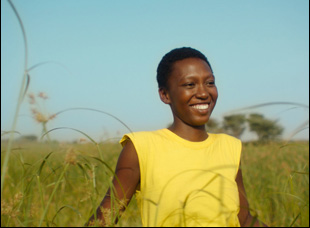
You can imagine we had a lot of issues because of that and the shoot was really, really difficult, but that created a lot of bond between my team and I and the people from the village. And this was the first time that they heard about cinema. They don’t have TV and sometimes they don’t have phones, so seeing a big crew of filmmakers coming into their little town, they were so impressed and so happy. A lot of them worked on the movie. It helped to create a good atmosphere and a good team spirit.
When you began writing this in 2014 and I imagine it’s such a formative period in your own life, was there anything that changed when thinking about the story you wanted to tell?
The story didn’t change, but I think in 2014, it was the story of Banel and Adama, a real love story. But after that, when I rewrote a bit, I really wanted to put the story just around Banel, and the love story is a second story and the first is the story of what is it to be a woman, [specifically] a woman in this community, and both how difficult it is to be a woman, but also the joy to be a woman. I think it’s because of my reading of Toni Morrison, Maya Angelou, and Jesmyn Ward, I rewrote this character and it was really important for me that this story is a story about a woman.
“Banel & Adama” opens on June 7th in New York at Film Forum, June 14th in Los Angeles at the Laemmle Royal and Chicago at the Gene Siskel Film Center, June 21st in Nashville at the Belcourt Theatre, in Columbus, Ohio at the Gateway Film Center, the Sag Harbor Cinema in New York and in Bethlehem, New Hampshire at the Colonial Theatre, July 5th at the Detroit Institute of the Arts and July 18th at the Cleveland Cinematheque.




